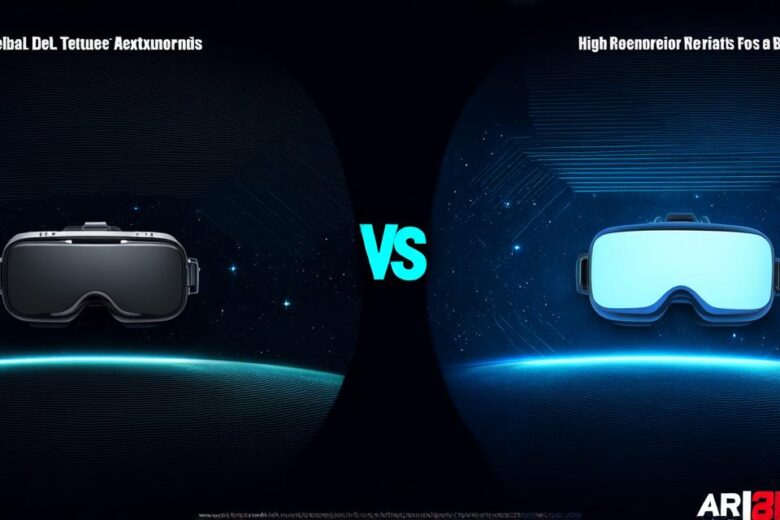Introduction:
Virtual reality (VR) and augmented reality (AR) are two of the most exciting technologies in the world of immersive computing. While they share some similarities, there are also significant differences between them. In this article, we will explore the main differences between them and how they can be used by AR developers to create more engaging and interactive experiences for users.
What is Virtual Reality?
Virtual reality is a computer-generated simulation of a 3D environment that users can interact with using specialized headsets or other devices. VR allows users to enter a virtual world and experience it as if they were really there, with full sensory immersion that includes sight, sound, touch, and even smell.
What is Augmented Reality?
Augmented reality, on the other hand, is a technology that overlays digital information on top of the real world, in real-time. AR enables users to interact with their physical environment while also receiving additional information or context through a device such as a smartphone or tablet.
The Main Differences between Virtual Reality and Augmented Reality:
-
Immersion vs. Interaction:
- One of the key differences between VR and AR is the level of immersion that each technology provides. VR completely immerses users in a virtual world, while AR adds digital elements to the user’s real-world environment.
- This means that VR can provide a more complete sense of being in another world, but AR can be used for more practical and interactive purposes.
-
Realistic vs. Artificial:
- Another difference between VR and AR is the level of realism that each technology can achieve. VR can create highly realistic simulations of environments and objects, while AR may have limitations due to the need to overlay digital information on top of the real world.
- However, AR can be used to enhance and supplement existing real-world experiences in a way that VR cannot.
-
Cost vs. Complexity:
- VR technology can be expensive and complex to set up, while AR can often be more accessible and cost-effective.
- VR requires specialized equipment such as headsets and motion controllers, which may not be available to everyone. AR, on the other hand, can often be implemented using a smartphone or tablet and is generally more user-friendly.
-
Use Cases:
- The applications of VR and AR are quite different, with VR typically used for entertainment purposes such as gaming and immersive experiences, while AR is often used for practical purposes such as training, education, and marketing.
- However, there are also many opportunities for both technologies to be used in the same field, such as in the design and visualization of products or environments.

Case Studies:
One example of how VR and AR can be used together is in the design and visualization of furniture and home decor. With VR, users can explore a virtual room and see how different pieces of furniture and decor would look in that space. AR, on the other hand, can be used to provide additional context and information about each item, such as where it comes from or its history. By combining these two technologies, users can get a more complete sense of what they are buying and how it will fit into their home.
Personal Experiences:
I have had the opportunity to try both VR and AR in my work as an AR developer, and I can attest to the differences between them. While VR can be incredibly immersive and engaging, it can also be overwhelming at times. AR, on the other hand, provides a more subtle enhancement to the user’s experience, without becoming too intrusive or distracting.
FAQs:
1. What is the main difference between virtual reality and augmented reality?
Virtual reality is a computer-generated simulation of a 3D environment that users can interact with using specialized headsets or other devices. Augmented reality, on the other hand, is a technology that overlays digital information on top of the real world, in real-time.
2. How do virtual reality and augmented reality differ in terms of immersion and realism?
VR provides a more complete sense of being in another world, with full sensory immersion that includes sight, sound, touch, and even smell. AR may have limitations due to the need to overlay digital information on top of the real world, but it can be used to enhance and supplement existing real-world experiences.
3. What are some common use cases for virtual reality and augmented reality?
VR is typically used for entertainment purposes such as gaming and immersive experiences, while AR is often used for practical purposes such as training, education, and marketing. However, there are also many opportunities for both technologies to be used in the same field, such as in the design and visualization of products or environments.
Conclusion:
In conclusion, virtual reality and augmented reality are two different but complementary technologies that can be used by AR developers to create more engaging and interactive experiences for users. While VR provides a more complete sense of immersion, AR can be used to enhance and supplement existing real-world experiences in a practical and effective way. By understanding the main differences between these two technologies, AR developers can choose the best approach for their specific needs and goals.
